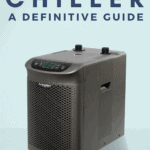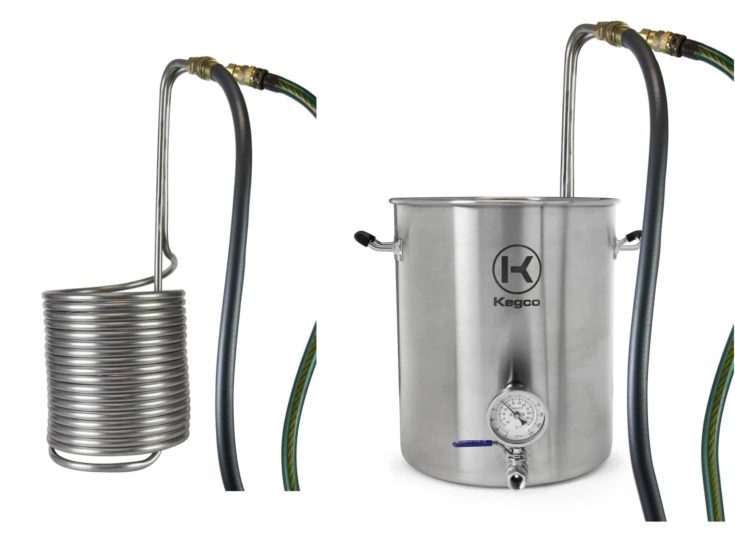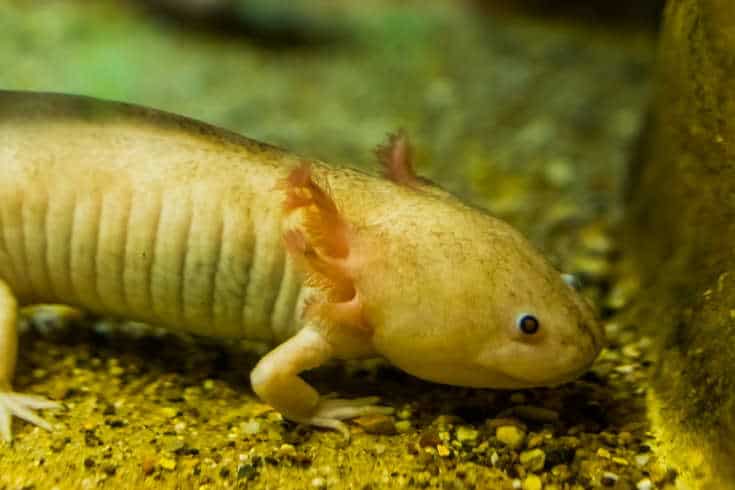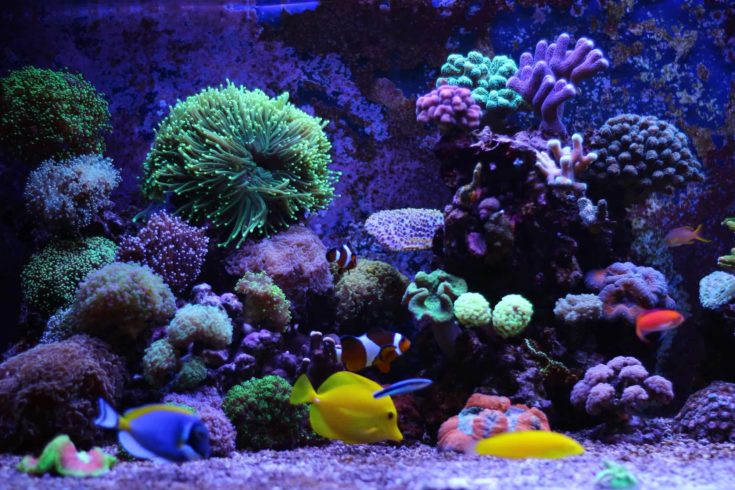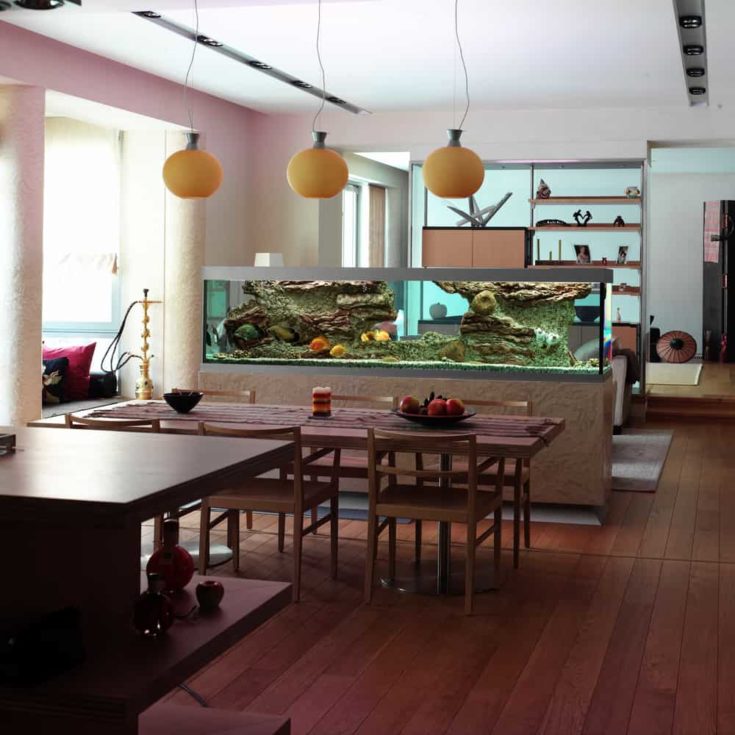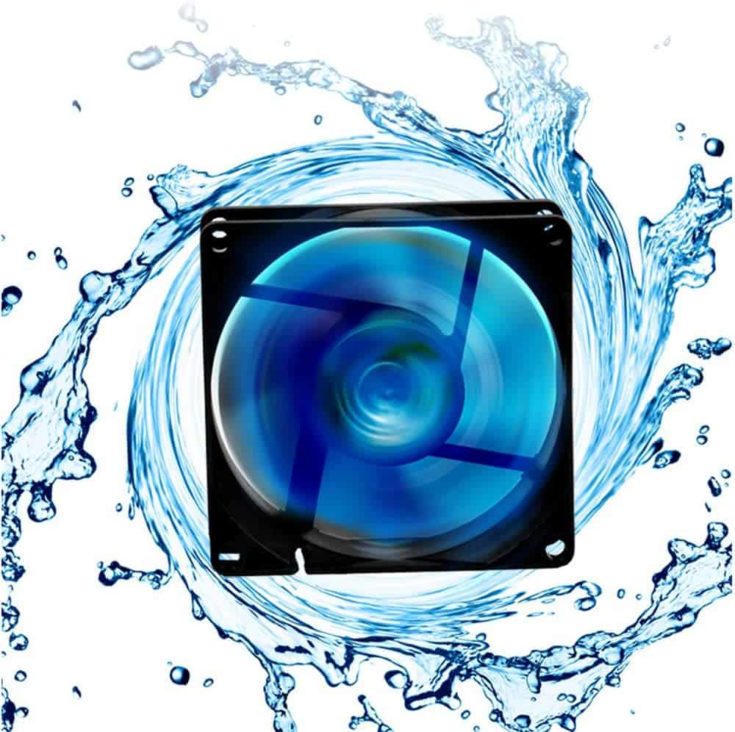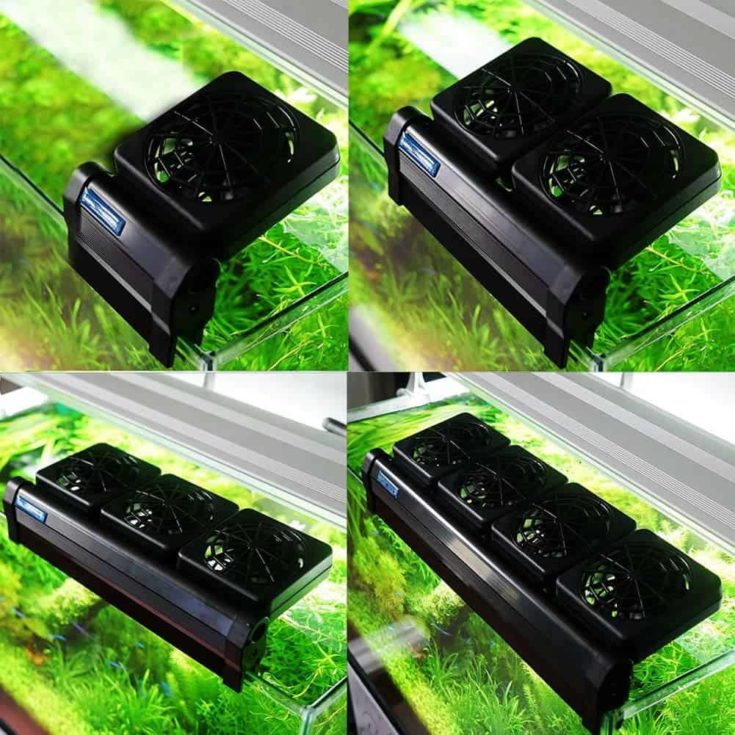The correct water temperature is crucial for the health of your fish and other aquarium residents. That’s because fish, amphibians, invertebrate species, such as shrimp and snails, and even the bacteria that process fish waste in your filter system are poikilotherms.
These creatures are “cold-blooded,” meaning that their body temperature is at the mercy of the surrounding environment. So, if the water in your fish tank gets too warm, the residents will suffer.
In this guide, we provide you with in-depth aquarium chillers reviews to enable you to buy the best aquarium chiller or saltwater chiller for your setup.
Quick Comparisons Of The 5 Best Aquarium Chillers
| IMAGE | BRAND | DETAILS | |
|---|---|---|---|
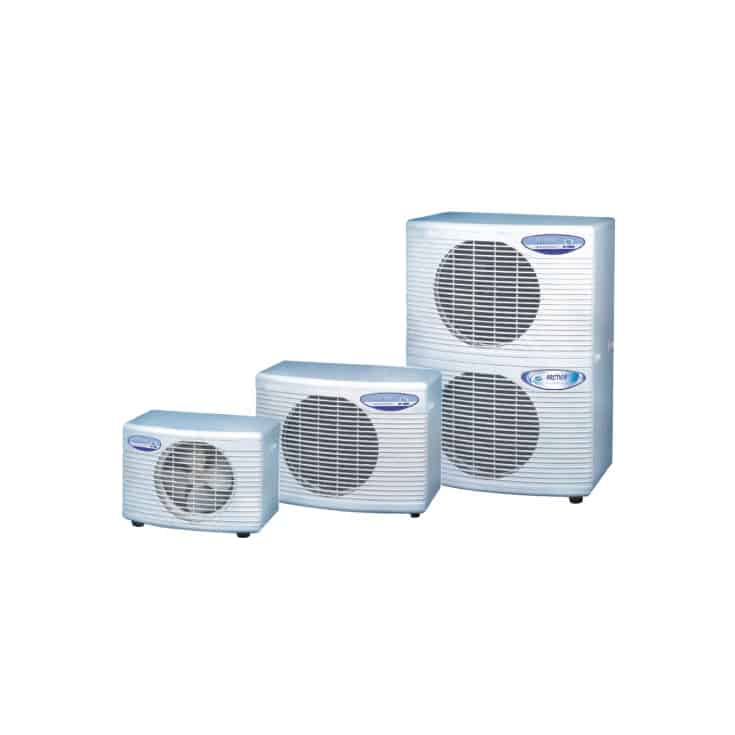 | JBJ Commercial Arctica Titanium Chiller |
| View Product |
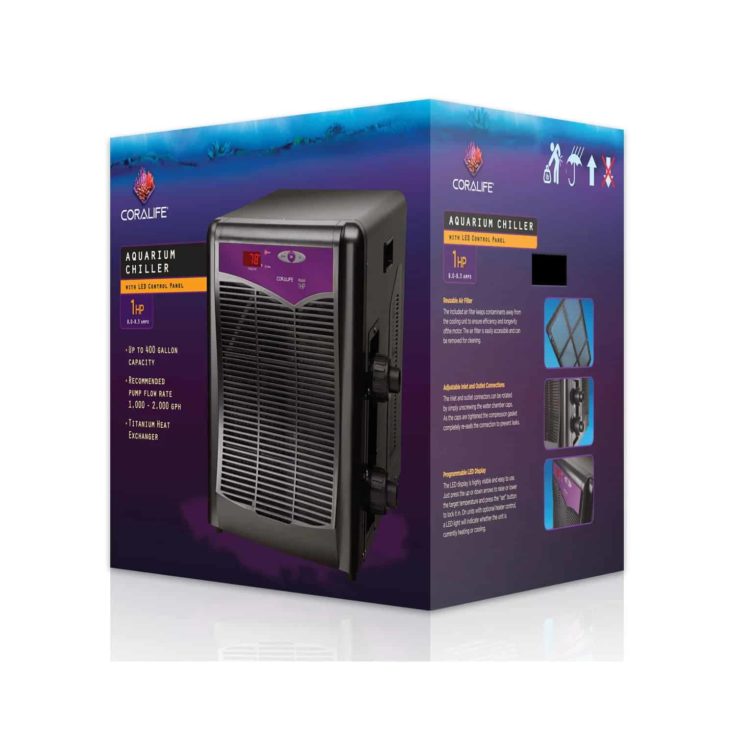 | Coralife Aquarium Chiller |
| View Product |
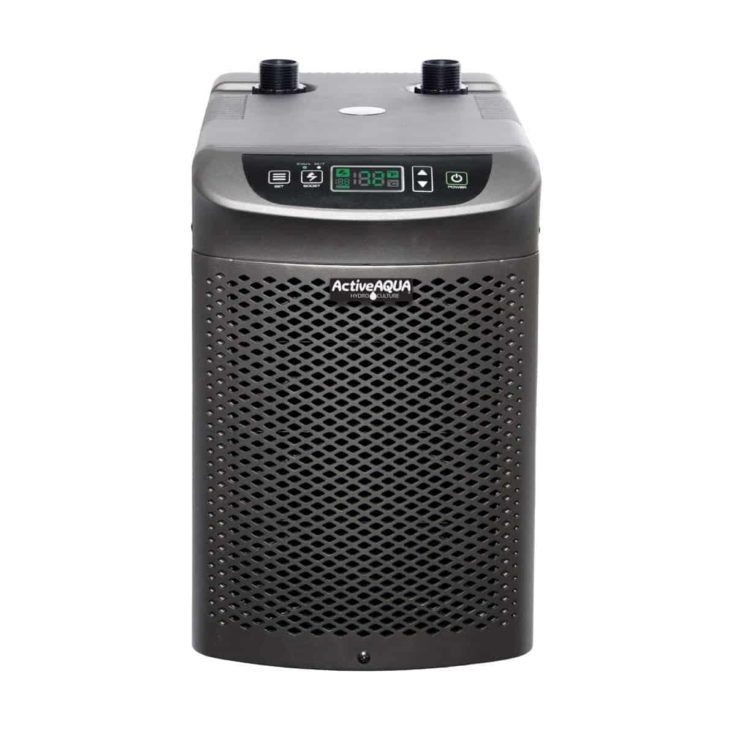 | Active Aqua Water Chiller Cooling Systems |
| View Product |
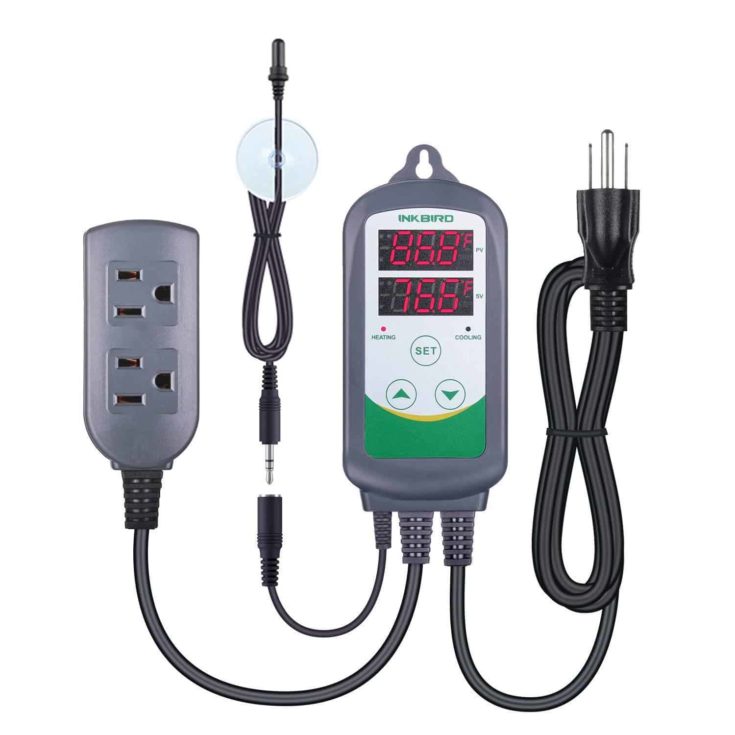 | Inkbird Heating and Cooling Dual Stage Temperature Controller |
| View Product |
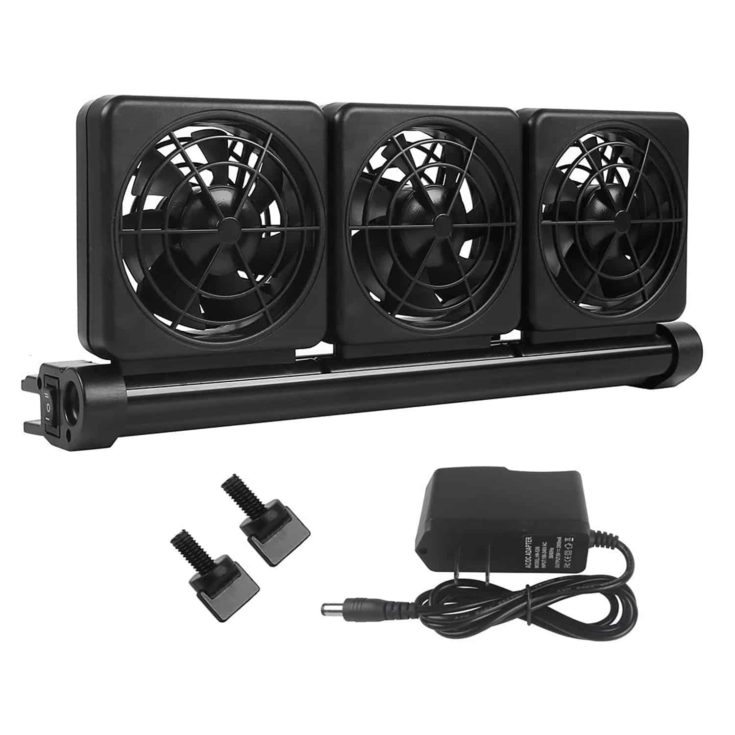 | Petzilla Aquarium Chiller |
| View Product |
What Is An Aquarium Chiller?
An aquarium chiller is a device that you install in-line with an external fish tank filter system to chill (or cool) the water tank water as it is circulated through the filter. A chiller that’s coupled with a thermostat prevents the tank water from rising above a pre-set temperature.
How Does An Aquarium Chiller Work?
An aquarium chiller works by the process of “heat exchange,” taking heat from the water, which effectively lowers the temperature.
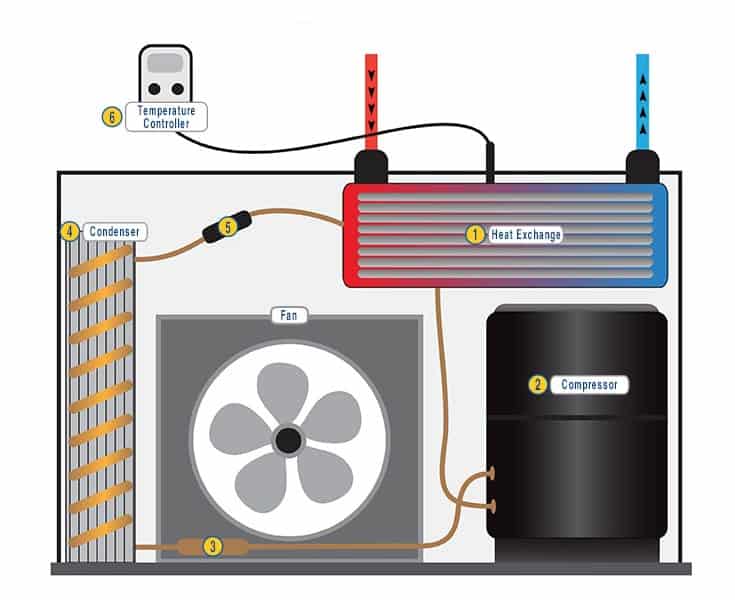
The device is made up of four basic components:
- Heat exchanger
- Condenser coil
- Compressor
- Expansion valve
The heat exchanger begins the cycle. Liquid refrigerant in the coils evaporates, absorbing heat from the tank water that’s circulating through the heat exchanger unit. The heat exchanger is made from titanium, which transfers heat very efficiently to the coils, as well as resisting corrosion by saltwater. Any refrigerant vapor is removed from the evaporator via the compressor.
The compressor pumps the refrigerant vapor into the condenser, elevating the temperature and pressure as it does so. Inside the condenser tubes, the refrigerant condenses, and its heat dissipates into the air. The chiller unit uses a fan to blow cool air across the hot condenser coil, effectively removing the heat from the refrigerant.
The liquid refrigerant that’s under high pressure in the condenser is passed through the expansion valve, reducing the pressure and temperature as it passes into the evaporator. Again, the refrigerant passes over the chilled coils, absorbing more warmth and concluding the cooling cycle.
Immersion Chillers
A drop-in or immersion chiller works in much the same way as a flow-through chiller as described above, although the titanium heat exchanger resides in the filter sump.
Drop-in chillers are not generally used in home tanks as they are large, noisy, and take up a lot of space.
Aquarium Chillers
Purpose-built aquarium chillers are the way to go if you need a device to regulate the heat in your fish tank.
These devices are small, quiet, simple to install, and their maintenance is relatively straightforward and hassle-free. Aquarium chillers have a thermostat that monitors the water temperature. You set the temperature you want, and the chiller turns itself off and on as required.
Some models have alarm systems to alert you if the temperature rises above your preset limit.
Thermoelectric Coolers (TEC)
Thermoelectric coolers (TEC) are another type of aquarium chiller that can be effective in tanks of 10-gallons capacity or less. TECs are not suitable for use in very large tanks when there are multiple heat-generating sources in operation, such as pumps and reef lighting.
TECs are solid-state heat pumps that work by using the “Peltier effect.” The Peltier effect happens when a DC current flows through two conductors that are dissimilar. The heat passes through the TEC from one side of a ceramic plate through to the opposite side, creating a difference in temperature.
When used in an aquarium situation, warmth from the tank is absorbed by a probe that sits in the water. That heat is then transferred to a “heatsink” that’s positioned above the water, and a fan pulls heat away from the heatsink.
The main advantage of that kind of aquarium chiller is that they are simple and compact in design. The downsides are that you need to drill through your tank or mount a device on which to mount the probe somewhere above your aquarium.
When To Use An Aquarium Chiller
If you keep fish species that prefer cooler water, such as the axolotl, and need the high levels of dissolved oxygen content that colder water provides, you will want to keep the temperature in your aquarium on the low side.
An aquarium chiller helps to keep the tank water cool, and that’s especially important if you live in a region where the climate is very warm during the summer months, or your home is especially warm during the winter when you have your central heating cranked up to the max.
Why Do Aquariums Overheat?
Many times, your aquarium overheats because of your water pump, your lighting unit, or a combination of both.
Aquarium Filtration Systems
Aquarium filtration systems, including canisters, powerheads, submersible pumps, and HOB filters, generally use magnetic drive pumps. The impeller in the pump is magnetic, and the electrical field that the system creates causes the impeller to spin, driving the pump. That process generates heat, which is transferred to the water in your aquarium. As you would expect, the larger the pump, the more heat it generates.
Reef Setups
Reef tanks are typically large setups, and they require a big water circulation pump to satisfy the requirements of corals. As mentioned above, a large pump generates a lot of heat, and that can be a real problem in a delicate marine environment where many of the residents do not tolerate very warm temperatures.
Lighting Units
All fish tank lighting units produce a certain amount of heat.
If you’re old-school and you favor incandescent bulbs and metal halide fixtures, those lights produce the most heat.
Fluorescent tubes are cooler, but they still produce sufficient heat levels to warm the water in your aquarium.
LEDs are the coolest form of aquarium lighting, but even these radiate a small amount of heat. You can help to reduce the heat in your aquarium by switching to using LEDs.
Other Causes
Overheating can be caused by other factors too, including:
- Very hot weather
- Inadequate ventilation or air conditioning
- Placement of the aquarium close to a heat source
Of course, it may be the case that you simply live in a hot country or region with a climate that’s warm all year round.
Pump GPH vs. Chiller Capacity
It’s crucial that you match the water pump to the chiller. The pump draws warm tank water through the chiller, over the heat exchanger, and back to the aquarium. So, the cooling process is ongoing and gradual.
For the water temperature to remain stable, the water must continually circulate through the chiller. If the water passes through the chiller too quickly, the unit won’t work efficiently. But, if the flow is too slow, the lines inside the unit could freeze, damaging the compressor and coils.
The solution to that is to use an independent circulation pump to move the water through the chiller or through the filter system and the chiller.
However, regardless of how you set up the chiller, the correct flow rate is vital.
The Correct Flow Rate
If you look carefully at the manufacturer’s instructions on the chiller’s packaging, you’ll see that they recommend a flow rate range in GPH (gallons per hour), which means that you need to choose a pump that fits that GPH.
For example, a pump might be rated at a flow rate of 200 GPH, but that equates to zero head pressure. That means that the calculation doesn’t consider the pressure that’s necessary to push the water through the chiller unit to reach the tank. At four feet of head pressure, the pump’s flow rate reduces to 60 GPH. Basically, the flow rate of water pumps reduces greatly as the head pressure increases.
Most good water pump producers provide figures on their website that give you the true flow rate versus the head pressure or water height. So, when you choose your pump, first check the flow rate that’s recommended for the chiller you’re buying.
Bottom line: If the flow rate is inadequate, the aquarium chiller won’t work properly.
Chiller Placement
Chillers extract heat from the water and release it into the air. So, for that reason, it’s best not to put the chiller in your aquarium cabinet, as that heat will end up in the cabinet where it could potentially reheat the tank.
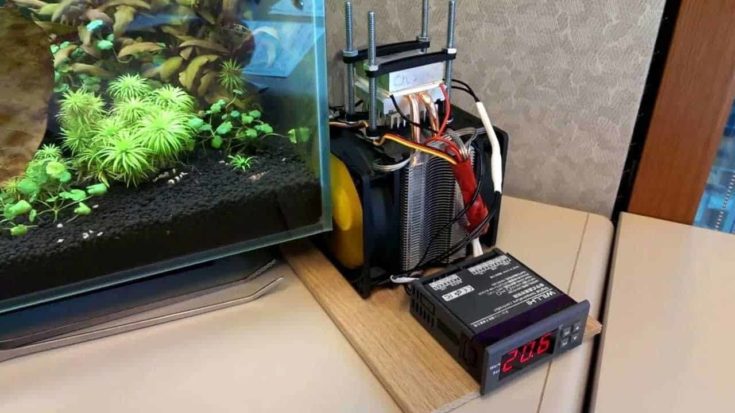
Aquarium chillers need to be placed in a well-ventilated area that will remove the heat they expel away from the fish tank and the chiller. If the chiller can’t get rid of the heat, the unit becomes less effective and wastes a lot of energy. For that reason, most manufacturers recommend allowing at least 12 to 18 inches of space around the chiller unit.
Cheap Chilling
Running a chiller unit can be expensive, but there are ways that you can keep the costs down.
Reduce Lighting
A quick-fix solution to a tank that’s too warm is to turn off the lights. However, that could harm plants or corals, so you should either switch to cool-running LEDs or reduce the lighting time to a maximum of eight hours per day.
Cooling Fans
Use a desk fan placed close to the tank to cool the water. Always use the lowest setting so that you don’t blow the water out of the aquarium.
Water Bottle
Take a clean plastic bottle and fill it three-quarters full of water. Freeze the bottle of water, leaving the top off. Replace the cap and put the bottle of frozen water into your aquarium. You can use more than one bottle, but be careful not to reduce the water temperature by more than 3o Fahrenheit, as that will stress your fish.
Choosing An Aquarium Chiller
Chillers are rated in BTUs or horsepower, and you need to get the right size for maximum efficiency vs. minimal running costs. Check the manufacturer’s website, and use their chiller calculator to get the right size.
When using the calculator, always choose the highest water temperature that you expect to have and pick the largest size your tank can handle. That’s because the warmer the water, the less volume the chiller will be able to handle.
Also, bear in mind that a larger chiller unit will operate on shorter cycles than one that is too small. So, the noise of the unit will be less intrusive and it will cost less to run in the long-term.
Top 5 Aquarium Chiller Reviews
Here are reviews of our five favorite aquarium chillers that are on the market today.
1. JBJ Commercial Arctica Titanium Chiller

- Maximum tank size: 130 gallons
- Recommended pump size: 160 - 295 GPH
- 16.5” L x 9.8” W x 18.5” H
The Arctica Titanium Aquarium Chiller from JBJ is top of the heap when it comes to advanced technology.
The unit has a titanium coil that affords maximum contact and increased chilling performance. Also, the condenser is situated on the front of the unit. That pulls cool air from the front of the unit and exhausts the warmer air via the rear of the chiller.
The chiller has an integrated controller and thermostat to keep the temperature you want within +/-1-degree Fahrenheit. The controller’s LCD display is easy to read in any light, so you can double-check the settings and make any adjustments quickly.
Other sizes of this unit are available, and you can size a unit to suit your fish tank by using the manufacturer’s on-line calculator.
JBJ provides a two-year warranty on this product.
| PROS | CONS |
|---|---|
|
|
2. Coralife Aquarium Chiller

- Maximum tank size: 55 gallons
- Recommended pump size: 200 - 300 GPH
- 14.5” L x 12.75” W x 15.75” H
Coralife’s 1/10 HP Aquarium Chiller unit is suitable for use with marine and freshwater aquariums and comes in a range of sizes.
The unit features an automatic temperature control system that promises to keep the water temperature in your aquarium at +/- 2-degrees Fahrenheit of the preset. The LED display is easy to read and programming is quick and simple.
This chiller is built to last and is fitted with a titanium heat exchanger that won’t rust or corrode, and is super-efficient, too, in transferring heat from your tank water into the air. Cleaning the reusable air filter is a simple and hassle-free task, as the filter is removable.
Finally, the 5/8” – ¾” hose connections are barbed and adjustable, making setting up the unit and routing the hoses a breeze.
| PROS | CONS |
|---|---|
|
|
3. Active Aqua Water Chiller Cooling Systems

- Maximum tank size: 13 to 15 gallons
- Recommended pump size: 132 - 396 GPH
- 18.3” L x 11.8” W x 18.4” H
Active Aqua make chillers that are aimed mainly at hydroponics hobbyists, although the units’ features do make them suitable for use in an aquarium.
Unlike many chillers, the Active Aqua is eco-friendly, using Freon-free R-134a refrigerant, which is a consideration if you’re keen to use products that have the future of the environment in mind.
The unit has an LCD touchpad, making it very easy to preset the temperature you want. Your settings are stored in the unit’s memory, so the chiller will automatically reset and restart in the event of a power outage. The default cut-out setting is two degrees Fahrenheit over the preset, preventing the unit from constantly switching on and off or short-cycling. That’s an awesome feature that radically prolongs the unit’s lifespan.
The unit has a corrosion-resistant titanium heat exchanger that’s suitable for use in both marine and freshwater tanks and positioning the unit is made easy thanks to the built-in handles.
The chiller comes with two sets of fittings, enabling you to choose either ¾” or 1” diameter hoses.
| PROS | CONS |
|---|---|
|
|
4. Inkbird Heating and Cooling Dual Stage Temperature Controller

- Maximum tank size: 13 to 15 gallons
- Recommended pump size: 132 - 396 GPH
- 5.5” L x 2.7” W x 1.3” H
Inkbird has produced a unit that is a heating and cooling device all in one.
The unit has an easy to use control with a clear LCD display that can be set to show the water temperature in either Celsius or Fahrenheit. There’s a really handy alarm feature too, alerting you if the temperature falls too low or rises too high. There’s also a device failure alarm to let you know if the unit has stopped working or there’s a power outage.
The chiller and heater combo has a fully-submersible, replaceable plastic probe that is built to resist corrosion. The unit itself has two output sockets, one for heating and the other for cooling. Dual display windows enable you to set and measure the temperature simultaneously.
All in all, this is a simple device that works well and is very easy to use.
| PROS | CONS |
|---|---|
|
|
5. Petzilla Aquarium Chiller

- Maximum tank size: 10 gallon
- Recommended pump size: N/A
- 4.29” L x 2.01” W x 6.3” H
This device by Petziller is actually a simple fan, rather than a chiller unit.
The fan is designed to fit onto the lip of the tank and blow cool air across the water surface to remove excess warmth and chill the water as it does so. Because one fan is only suitable for use with a 10-gallon setup, you will need to buy more units if you have a large aquarium. That said, this unit is handy if you want to get rid of some of the heat generated by lights or UV filters.
The fan has a wide-angle adjustment feature and variable speed settings too.
| PROS | CONS |
|---|---|
|
|
Conclusion
If you keep fish species that prefer their tank temperature to be cool and you have issues with maintaining suitable water temperature, you might need an aquarium chiller.
Of the five units we reviewed in this guide, my personal favorite and recommendation is the JBJ Arctica Titanium Aquarium Chiller. This chiller is perfectly designed for durability and performance and features an integrated controller and thermostat to keep the preset temperature stable and within +/-1-degree Fahrenheit. I love the easy to read LCD display too. For peace of mind, the unit comes with a 2-year warranty.
